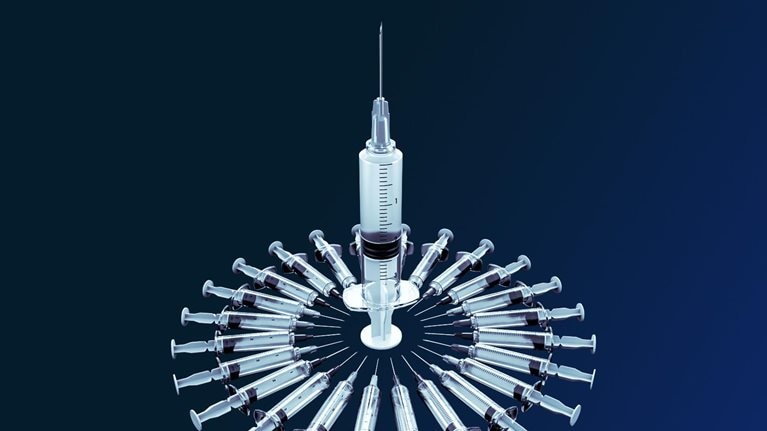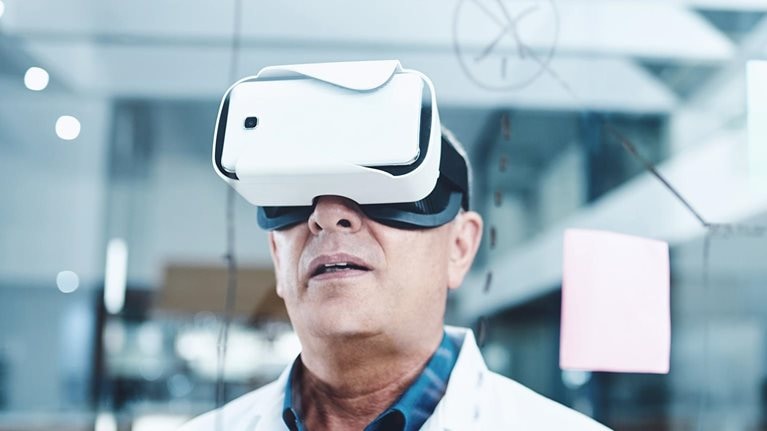Over the past few years, we have seen macro trends shift the healthcare landscape in a few critical areas. These shifts include a stronger push toward digital technologies, greater patient involvement in decision making, an increasingly higher bar for innovation backed by clinical and economic evidence, and more complex procurement processes with multistakeholder decision making. The result is a more competitive ecosystem fueled by new entrants from both emerging economies and adjacent industries.
As the “consumerization” of healthcare has evolved in recent years, consumer preferences have likewise changed, and expectations have risen. The COVID-19 crisis has exacerbated and hastened already-evolving consumer values and needs; for instance, telehealth uptake, which was already on the rise, has been accelerated by the pandemic. This complex landscape demands a clear, precise, and meaningful understanding of the patients, clinicians, and other stakeholders in the care continuum whom medical-device innovators serve. But traditional market research may fall short, failing to accurately or completely reflect stakeholders’ true needs. Ethnographic research offers a potential solution.
Ethnographic research is a structured, systematic, and rigorous social-science method of inquiry that involves studying how people think, act, feel, and live in the real world. This method has been successfully used in medtech product design, as well as in customer-experience and engagement-model-design work to help uncover a deep understanding of people’s lived experience throughout their health journey. This research includes exploring the root causes of the challenges and joys people may experience in relation to their condition, how they use and engage with medical products, and the value or lack thereof these products bring to their lives. Ethnographic research can also be used to explore the needs and mindsets of patients’ caregivers, family members, and providers to enrich researchers’ understanding of those responsible for overseeing or prescribing the use of a product.
When carried out throughout the medical product’s life cycle and in combination with traditional market-research methods, ethnographic research can uncover powerful and actionable insights about human behavior. And it can differentiate device-innovator leaders from laggards. According to our research on the business value of design, medtech companies that invest in user research and design capabilities—of which ethnography is a fundamental component—increased their revenues and total shareholder returns (TSR) substantially faster than their industry counterparts did over a five-year period: 42 percentage points higher revenue growth and 108 percentage points higher TSR growth for the period as a whole.
Now is the time for innovators to invest in a deep understanding of their stakeholders.
The case for ethnographic research
While well-intentioned, traditional market research can be considered to have four major blind spots. First, self-reported experiences rely on people’s assumptions about their behavior rather than reflecting their true behavior. That is, market research assumes that what people say they do is what they actually do—but behavioral economic research reveals this is often not the case.1 Second, people significantly underestimate their own biases and assume that others act and behave similarly to themselves. Third, surveys typically measure individual touchpoints as opposed to the end-to-end patient journey—meaning the results are decontextualized from the sequence of events in patients’ lives and lack the causality behind why one event led to a specific behavior or experience. For example, a survey result might demonstrate how a patient feels after receiving a diagnosis but not what the patient does next as a result of receiving the diagnosis, which might uncover an opportunity for innovation. Finally, most surveys only provide insights into the questions that are asked, leaving potential gaps in areas that were not specifically targeted.
By contrast, ethnographic research draws on a collection of social-science methods that range from interviews, to observation, to role-playing, in order to understand what motivates human behavior. Ethnographers are often trained anthropologists, sociologists, and design researchers who meet patients, caregivers, and providers where they live and work to better understand their desires, needs, goals, and emotional and physical environments. Ethnographers synthesize and coalesce all the unstructured and voluminous raw data—including notes, recordings, photos, videos, and artifacts—into a set of actionable insights that medical-device innovators can translate into solutions to better serve stakeholders.
Ethnographic research may surface “unknown knowns” or inconsistent truths about its subjects, and “unknown unknowns,” or unknown hidden truths (Exhibit 1). In doing so, ethnographic research may uncover opportunities—ones that reach patients, caregivers, and providers to meet their needs—that medical-device innovators may not have known existed.

The importance of understanding people’s needs
Insight into people’s needs is critical for two reasons.
Patients and providers expect to be understood. Perhaps the simplest reason is that patients and providers are demanding it. The growth of healthcare consumerism has led to increasingly empowered patients who are no longer delegating all of their treatment decisions to their healthcare providers. Instead, patients are playing larger roles in their treatment pathways, as they have increased access to information; almost before they’ve left their doctor’s office after a new diagnosis, patients are searching for answers via the internet. Many come to their doctor with their own research, along with theories and perspectives. Similarly, providers are increasingly demanding that medical-device innovators better understand their needs. For example, unable to travel during the pandemic, and unable to connect with their peers to learn about the latest developments and best practices, providers are looking to medical-device innovators to virtually convene experts and deliver curated professional-education content so that physicians don’t lose ground on their own development and can continue to deliver the best-in-class care their patients expect. Through a deeper understanding of patients and providers, medical-device innovators have an opportunity to address their needs more comprehensively.
Misunderstanding can lead to poor outcomes. Misunderstanding patient needs can lead to poor treatment onboarding—nearly 45 percent of insulin-treated patients skip or avoid injections for myriad reasons, such as anxiety, fear, or apathy.2 A true understanding of patient needs and behaviors can open the opportunity for a medical product or procedure to meaningfully improve the quality of care, quality of life, and clinical outcomes. Misunderstanding providers, too, can have untoward consequences, leading providers to switch to a vendor that better meets their needs. For example, as product demonstrations have moved to digital settings, physicians have noted that digital engagement has not been as effective or reliable as in-person sessions.3 Some things are simply harder to achieve remotely—such as tactile feedback of a particular device. Others are less difficult to achieve, such as personal rapport between trainer and trainee to ensure comprehensive product education.
Would you like to learn more about our Life Sciences Practice?
Harnessing ethnographic research throughout a product’s life cycle
Many medical-device innovators understand the usefulness of ethnographic research for product design. It can help companies prioritize a road map for innovation, and it can provide insights into specific usability challenges involved in onboarding patients and ongoing care from all players—including patients, family, healthcare providers, and sales representatives. Because of the nature of the product life cycle, ethnographic research can help with obsolescence decisions and ensure that a product continues to meet the evolving needs of all players.
But what many medical-device innovators miss is that these same research methods can be used to understand what matters to customers in the commercialization stage. Since people’s health conditions, ways they interact with caregivers and providers, and needs continue to change, there is opportunity to check in with customers throughout the commercialization life cycle and to identify any issues that emerged since development and launch.
Ethnographic research during the market launch and commercialization phase of the product life cycle can examine patients’, caregivers’, and providers’ journeys. It can also explore their decision-making authority, delegation points, moments of meaning that either drive them toward or away from a given therapy, and inflection points where all stakeholders meet and diverge.
Identifying new opportunities through ethnographic research: A use case
One medical-device innovator saw an opportunity to renew its understanding of a core therapeutic area in light of changing market dynamics. Leaders set out to rethink everything from their strategy to product offerings, and they started by working to deepen their understanding of their patients and providers by identifying key unmet needs across the care continuum. They employed both a traditional research approach, surveying physicians and mining claims data, and an ethnographic one, pursuing qualitative research with patients and their families, providers, and the internal organization.
The innovator’s ethnographic research revealed that specific physicians saw treatment by a medical device as a means to give patients greater agency in conquering their own disease. In addition, some patients were daunted by the concept of the medical device because they did not sufficiently understand how the device worked, how it fit within their overall treatment protocol, or that in some cases it was the only way to treat their condition. As for device representatives, ethnography revealed that they felt disempowered to discuss the disease state with specialists—that they needed additional training to improve their clinical fluency and confidence.
As a result of these findings, the company was able to reinvent its engagement approach, improve training, revamp its marketing collateral, and design a new approach to medical education. And this research allowed physicians to identify the right patient for the therapy at the right time during a patient’s disease progression.
Getting started
Five steps can help medical-device innovators approach their ethnographic initiatives at any stage in a product’s life cycle:
- Research framing. Synthesize existing internal data to distill a structured set of internal hypotheses to be explored and validated in the research. What is the company view as to how patients regard their products? What value do the products bring to the lives of patients and their families? Such synthesis will uncover any unknowns that can be further explored in the research—any major obstacles in ongoing engagement with products, for example, or how healthcare providers are framing products to patients relative to alternate therapies, and why.
- Research scoping. Identify target research groups and recruit participants. When deciding on a target group, it is critical to pinpoint a full ecosystem of players who are involved in shaping the lived experience of the patient—including patients themselves, spouses, and different healthcare professionals along the care continuum. In selecting these participants, medical-device innovators should focus on quality over quantity. Unlike traditional market research where large sample sizes are required to form general conclusions, sample sizes in ethnographic research can be smaller in order to prioritize understanding the human experience in depth. Medical ethnographers recruit representative subjects to provide rich information, and they adapt the plan regularly depending on the patterns that emerge from the data.
- Ethnographic immersion. Plan and conduct deep-dive ethnographic immersions. Historically, this phase could involve activities such as touring a patient’s neighborhood, role-playing the patient’s experience at the clinic, or one-on-one interviews to understand the sales representative’s perspective. The COVID-19 crisis has forced medical ethnographers to explore new ways of meeting with people and getting insight into their experiences. As a result, medical ethnographers have harnessed digital channels—such as videoconferencing and mobile video diaries—to build a comprehensive evidence base (Exhibit 2). In some ways, these approaches can be even more efficient than traditional methods: eliminating travel time for researchers, for instance, can mean they derive insights more quickly.
- Insights analysis. Identify patterns among respondents and develop insights into the commonalities that influence behaviors. For instance, ethnographic research may show that the way patients manage their condition is heavily influenced by social contexts and events. A man starting his insulin-therapy journey, for example, may struggle to develop and maintain regular injection routines when no one is around to remind him. Alternatively, a more-experienced diabetes-pump user may take “cheat days” from her insulin-pump therapy immediately following her quarterly doctor’s visits as a reward for adherence—which ultimately leads to negative clinical outcomes.
- Opportunity development. Identify key opportunity areas and develop concrete strategies to create lasting and measurable behavior change across the participant journey to support clinical outcomes. When mapped across the patient and family journey, clear opportunity areas can be identified at crucial moments to improve the patient’s experience. Strategies may include helping healthcare providers navigate early diagnoses, enabling patients to build durable and habitual management routines from the beginning, and empowering patients or caregivers to continue to monitor symptoms and routines in light of changing life events—such as having a baby or starting a new job.

To return to the examples from the previous point, for the man just starting insulin therapy, specific tools for experiential or embodied learning can help him anchor injection routines to existing daily habits, such as shaving in the morning, to catalyze long-term, durable behavior change at the start of the journey. For the experienced diabetes-pump user, timed behavioral nudges in the days immediately following her doctor’s visits can remind her of the importance of continuity in insulin-therapy management.
Best practices
A few best practices may be helpful to consider as medical-device innovators pursue ethnographic research.
Start small, then scale. Medical-device innovators should start by selecting one use case or therapy area and then focus on all stakeholders involved in the ecosystem. Once they have completed the five-step journey, they can consider taking the approach in other therapy areas.
Harness and build the expertise of the marketing team. Leaders can build institutional capabilities within the marketing function by involving it early, including in the research framing. They may consider, for example, nominating colleagues to be champions of this approach as they learn by doing.
Lay the groundwork to build a continuous ‘insights engine.’ Leaders should assess current capability gaps and consider refreshing their talent pool with ethnographic and design-thinking capabilities to create the foundation for an “insights engine” team. This team would be responsible for continuously harvesting insights and using outside research across all therapy areas to develop opportunities.
Having an authentic understanding of patients, customers, and other key stakeholders is no longer optional for medical-device innovators. The world is changing at unprecedented speed, and it is clear that much of what companies formerly knew about patients’ attitudes, values, and behaviors may no longer hold. Now is the time to invest in a refreshed understanding of patients, caregivers, and providers—and ethnographic inquiry is an effective tool for examining the patient journey and finding steps to jump-start the path toward health. More than a competitive advantage, this capability could be a strategic priority for any medical-device innovator that wants to emerge as, or continue to be, a leader.


